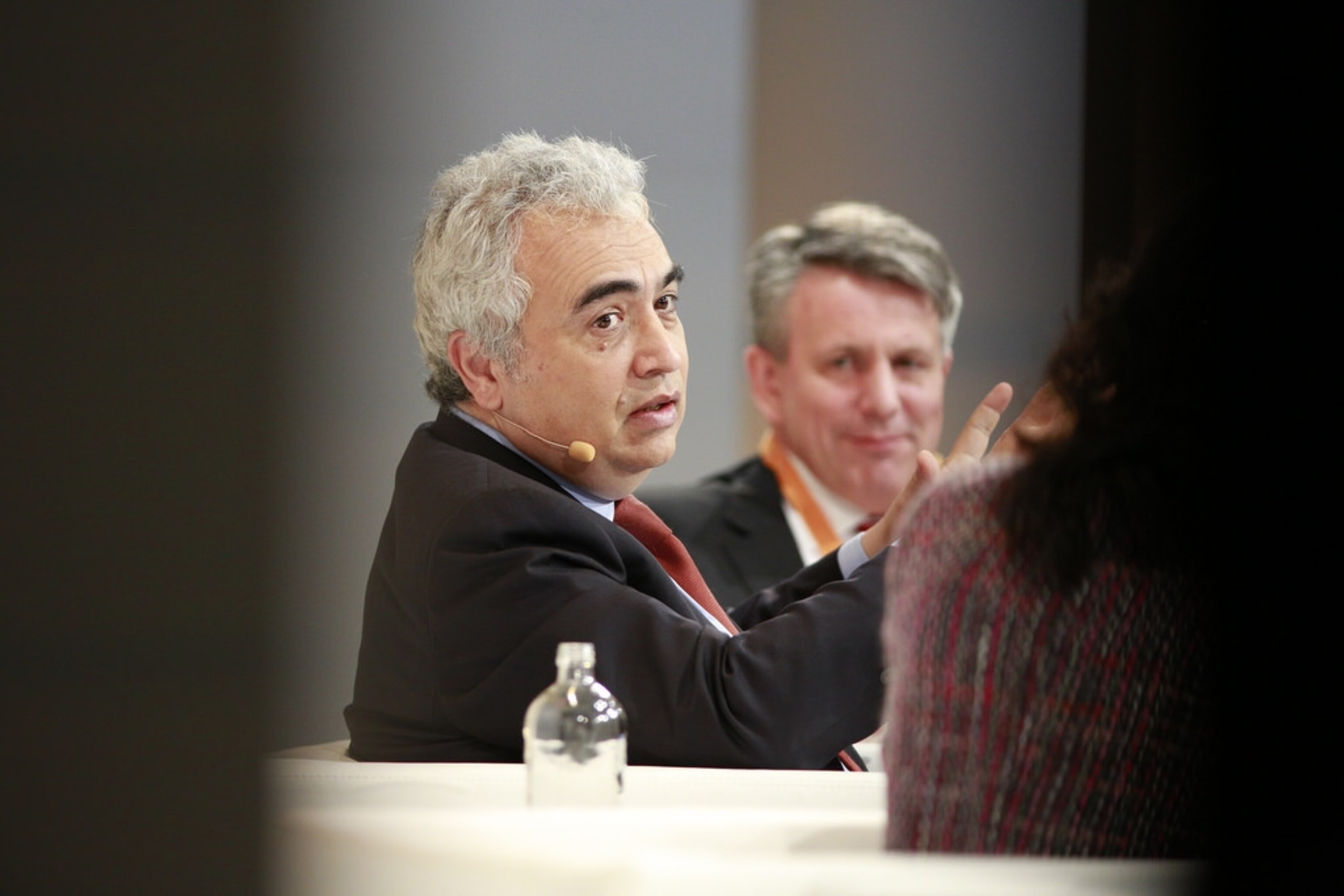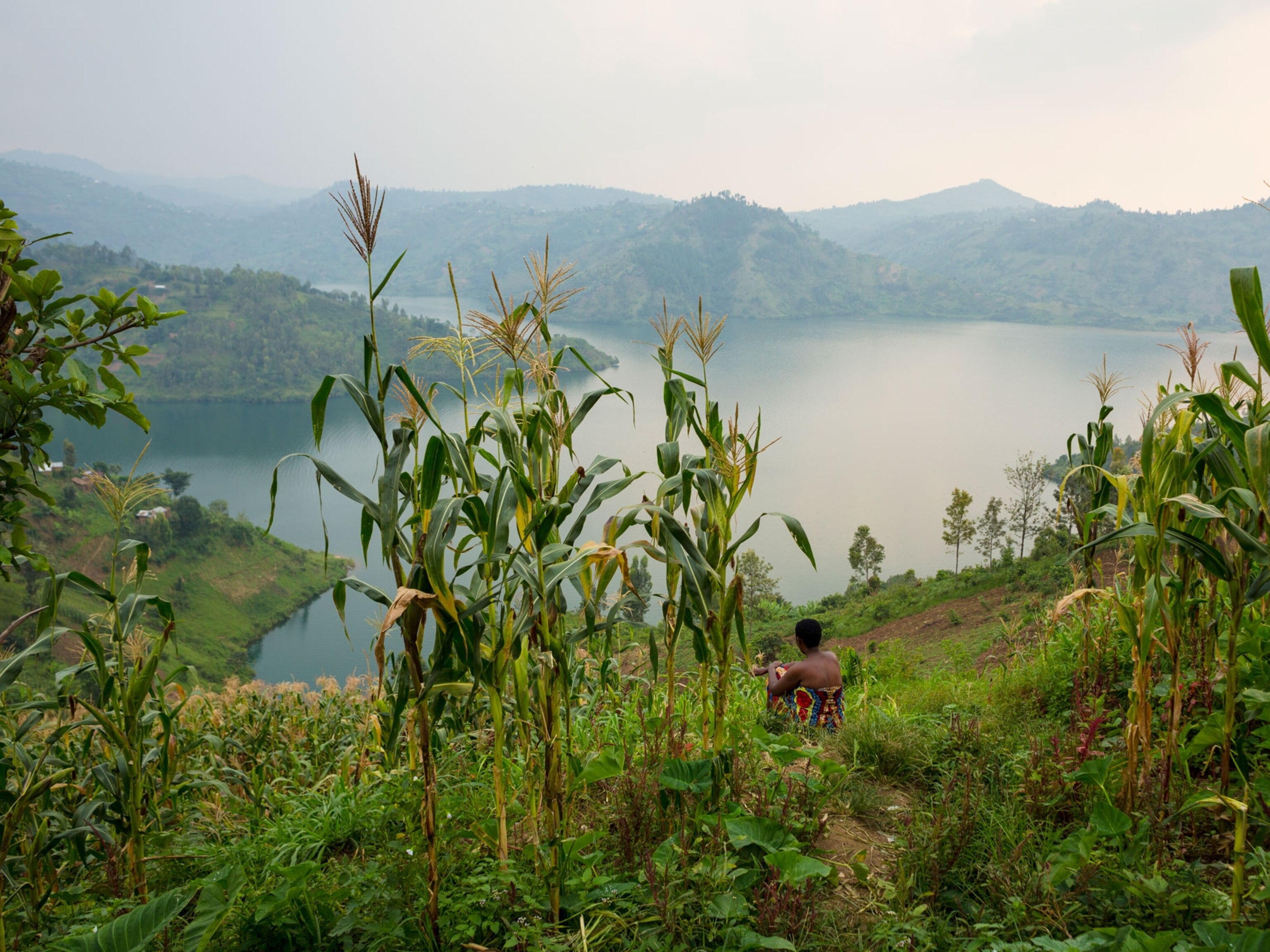Our world is facing an unprecedented growth in population, from seven to nine billion people by 2050, of whom 75 percent will live in cities. Mass urbanization, with expanding cities in China, India, the United States, and sub-Saharan Africa, is leading to much greater energy demand, air pollution problems, and climate change.
There is no better backdrop to discuss these challenges than Rotterdam, Europe’s largest harbor city, one of the “dirtiest” cities in the world when it comes to emissions of carbon dioxide and methane, and one of many Dutch cities facing the consequences of global climate change because of its position below sea level. (See related photos: “Nine Surprisingly Gassy Cities.”)
But Rotterdam is also a resilient city, as Mayor Ahmed Aboutaleb would have said in the opening panel discussion at the Powering Progress Together forum this week, if he had not had to leave the venue in a hurry—a gas leak posed a threat elsewhere in his city.
Rotterdam is Europe’s leading city when it comes to electric mobility, with 1,100 electric vehicles on the road and 1,000 charging stations. It has over 130,000 square meters of roof gardens. And it will reduce 400,000 metric tons of carbon emissions a year by using excess steam from the AVR Rozenburg power plant to heat 50,000 businesses and houses.
Roland Kupers, visiting Fellow at the University of Oxford, told three hundred business leaders and academics attending the forum that resilience is defined not only as the capability of cities to bounce back from stresses caused by man and nature, but also as a “learning system that becomes smarter by friction,” much like the human body that improves its immune system after being vaccinated with a virus.
Rotterdam, like so many other cities around the world, is learning. That’s why the Rockefeller Foundation selected it as one of 100 cities worldwide to participate in the 100 Resilient Cities Centennial Challenge, finding out how to address the increasing shocks and stresses of the 21st century.
“The heart of energy decisions will take place in cities,” said panelist Fatih Birol, chief economist of the International Energy Agency. “And there are two crucial areas to focus on: insulating buildings and innovating the transportation system, the major energy consumer in urban areas.” Birol proposes to implement “golden rules” to live by, so cities worldwide decrease their carbon footprint. (See related quiz: “What You Don’t Know About Climate Change Science.”)
Germany has declared its own golden rules in the “Energiewende”, a national energy transition policy that makes it one of the frontrunners in the implementation of renewable energy. (But coal has also made a comeback alongside the Energiewende: See related story, “Germany Plans to Raze Towns for Brown Coal and Cheap Energy.”)
The goal of the Energiewende is to produce 80 percent of all energy by way of renewable sources such as wind, solar and geothermal by 2050. Right now these sources already provide 25 percent of German energy, compared to 4 percent in the neighboring Netherlands.
This major change in German policy has created 360,000 jobs in the renewable energy sector and another 280,000 in the energy efficiency sector. Maybe that’s why 80 percent of all Germans approve of the policy, even though it demands 22 billion euros a year in investments.
Claudia Kemfert, head of energy, transportation, environment at the German Institute for Economic Research in Berlin, explained the Energiewende and added that although it originated in 2002, the policy is constantly under discussion and already needs changing: “We produce much more energy than we need. But we are still vulnerable when there’s no wind or sunshine. And due to the great oversupply of electricity, there is no economical incentive to take action on energy efficiency improvements or innovations for energy storage,” she said.
Is urbanization an opportunity to solve our population’s growing pains? It’s hard to say for sure, says Cameron Hepburn, senior research fellow at the Grantham Research Institute, London School of Economics. “The changes we need to go through are big. They are non-marginal. We are changing the identity of our economy, and we don’t always know who’s responsible for the decisions.
“At the moment, 82 percent of our economy is driven by fossil fuels. Any forecast about the energy transition is difficult to find credible,” Hepburn continued. “The economy, like the climate, is a complex system. We can’t predict the weather accurately beyond six days. And we have to be humble about forecasting the economy.”
A more positive outlook came from Benjamin Barber, founder and president of The Interdependence Movement and author of the book If Mayors Ruled the World. In his closing keynote speech, Barber declared a crisis in democracy. Nations increasingly fail to respond to crises preemptively: “Making a comparison with smoking, nations are improving lung tumor surgery instead of teaching people not to smoke.”
Cities hold the key to many solutions, according to Barber. He used the example of Mayor Ahmed Aboutaleb leaving the forum early: “That’s what mayors do. They are pragmatists instead of ideologists: problem solvers. They fix things. Global warming is a problem because it’s global. It’s not one nation’s problem. If it were Rotterdam warming, Mayor Aboutaleb and Shell* would have solved it already. Although we live in global times, cities should act interdependently. They can have a profound impact even when nations are doing nothing.’ (Vote and comment: “What Is the Best Way to Make Cities Sustainable?”)
*Shell is sponsor of National Geographic’s Great Energy Challenge initiative. National Geographic retains autonomy over content.
You May Also Like
Go Further
Animals
- This ‘saber-toothed’ salmon wasn’t quite what we thoughtThis ‘saber-toothed’ salmon wasn’t quite what we thought
- Why this rhino-zebra friendship makes perfect senseWhy this rhino-zebra friendship makes perfect sense
- When did bioluminescence evolve? It’s older than we thought.When did bioluminescence evolve? It’s older than we thought.
- Soy, skim … spider. Are any of these technically milk?Soy, skim … spider. Are any of these technically milk?
- This pristine piece of the Amazon shows nature’s resilienceThis pristine piece of the Amazon shows nature’s resilience
Environment
- This pristine piece of the Amazon shows nature’s resilienceThis pristine piece of the Amazon shows nature’s resilience
- Listen to 30 years of climate change transformed into haunting musicListen to 30 years of climate change transformed into haunting music
- This ancient society tried to stop El Niño—with child sacrificeThis ancient society tried to stop El Niño—with child sacrifice
- U.S. plans to clean its drinking water. What does that mean?U.S. plans to clean its drinking water. What does that mean?
History & Culture
- Meet the original members of the tortured poets departmentMeet the original members of the tortured poets department
- Séances at the White House? Why these first ladies turned to the occultSéances at the White House? Why these first ladies turned to the occult
- Gambling is everywhere now. When is that a problem?Gambling is everywhere now. When is that a problem?
- Beauty is pain—at least it was in 17th-century SpainBeauty is pain—at least it was in 17th-century Spain
- The real spies who inspired ‘The Ministry of Ungentlemanly Warfare’The real spies who inspired ‘The Ministry of Ungentlemanly Warfare’
Science
- Here's how astronomers found one of the rarest phenomenons in spaceHere's how astronomers found one of the rarest phenomenons in space
- Not an extrovert or introvert? There’s a word for that.Not an extrovert or introvert? There’s a word for that.
- NASA has a plan to clean up space junk—but is going green enough?NASA has a plan to clean up space junk—but is going green enough?
- Soy, skim … spider. Are any of these technically milk?Soy, skim … spider. Are any of these technically milk?
Travel
- What it's like to hike the Camino del Mayab in MexicoWhat it's like to hike the Camino del Mayab in Mexico
- Is this small English town Yorkshire's culinary capital?Is this small English town Yorkshire's culinary capital?
- This chef is taking Indian cuisine in a bold new directionThis chef is taking Indian cuisine in a bold new direction








